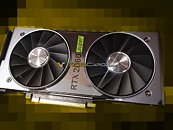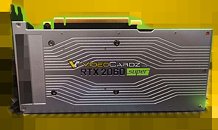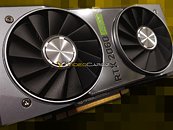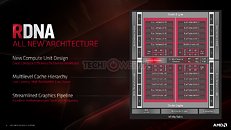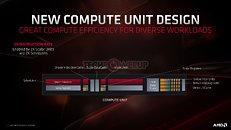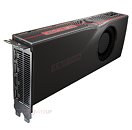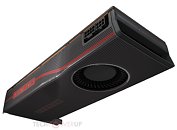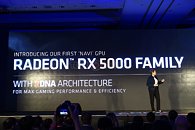
NVIDIA GeForce RTX 2060 Super Smiles for the Camera
Here are some of the first live pictures (not renders) of the upcoming GeForce RTX 2060 Super graphics card. As with the rest of the RTX 20 Super-series, this card features a reference board design resembling that of the original RTX 20-series, but with a chrome embellishment that accommodates the "Super" badge. The RTX 2060 Super is designed to compete with the upcoming Radeon RX 5700 at USD $399, or $50 more than the original RTX 2060. It's based on the "TU106" silicon, and is configured with 2,176 CUDA cores, but more importantly, a memory setup that's both 33 percent larger and faster than that of the original RTX 2060, made up of 8 GB of GDDR6 memory across a 256-bit wide bus, clocked at 14 Gbps. The card is expected to perform halfway between the RTX 2060 and RTX 2070.

